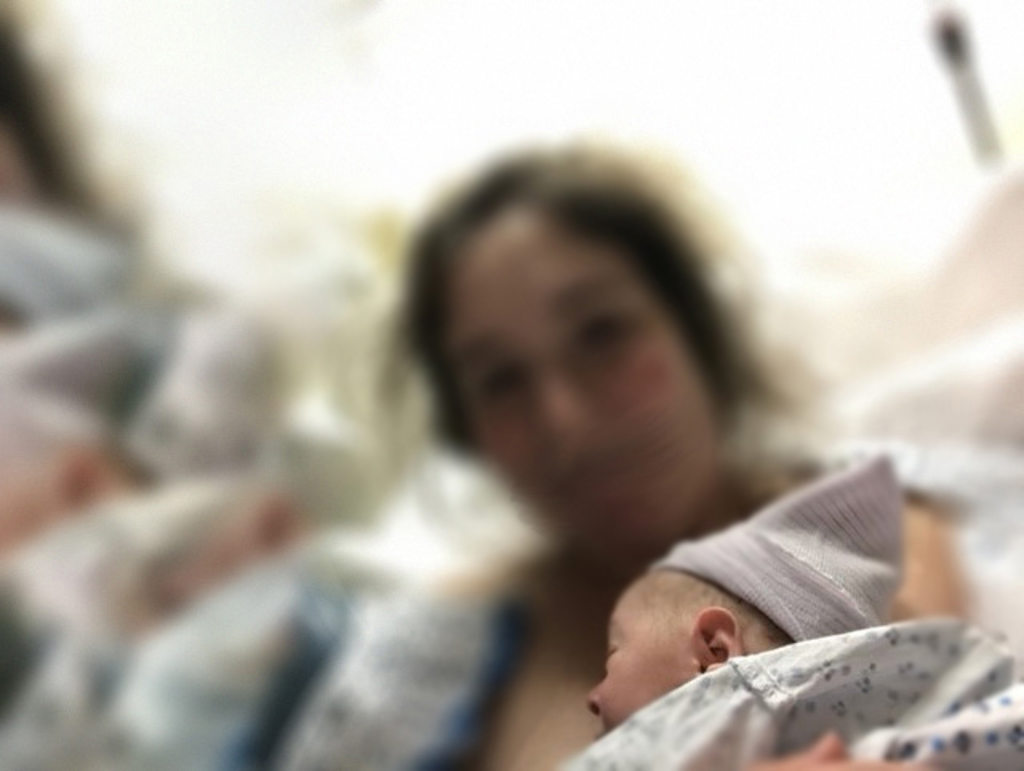
Is the new mother feeling the “baby blues” or postpartum depression?
A week after she brought her newborn son home from the hospital, Grace was having dinner with her husband and just started to cry. She was overcome with a sense of overwhelming sadness. For nearly two weeks following the baby’s birth, the new mom experienced periods of sadness and anxiety. Then, she found herself less emotional and worried and truly began to enjoy motherhood.
Grace was not unusual. She was experiencing the “baby blues,” a brief period following childbirth where the mother has mild symptoms that commonly include mood swings, crying spells, anxiety, irritability and difficulty sleeping.
According to the March of Dimes, approximately 80% of new mothers have the “baby blues.” It can affect new parents of any race, age, income or education level. When including still births and miscarriages, more than 900,000 women experience the “baby blues” each year in the United States.
“There are numerous hormonal and emotional changes as well as new stressors that occur during the postpartum period in a new mother,” explained Deanna Mascho-Cawley, DO, FACOG, a staff physician at Penn Highlands Life’s Journey OB/GYN. “Oftentimes there is an increased sensitivity to these changes in this period that can lead to postpartum depression. A healthy mother lends to a healthy baby and mental health is just as important as physical health. Postpartum maternal depression can lead to adverse effects on the offspring. Mothers who pursue therapy for postpartum depression have been shown overall to be happier, which leads to increased bonding with the child, better child care and improved development. Treating postpartum depression is essential in mothers to be able to lead a satisfied life and those positive effects extend to their family.”
Compared to the “baby blues,” postpartum depression (PPD) is a more severe condition which includes a mix of physical, emotional and behavioral changes that may continue for months. In the year after giving birth, one in seven women experience PPD. It is marked by symptoms more intense than those associated with the baby blues including, stark changes in appetite, extreme fatigue, constant negative moods, withdrawal or lack of interest in activities, difficulty concentrating and chronic physical ailments such as headaches and stomach disorders.
The most common treatments for PPD are medication and therapy. Antidepressants can help relieve symptoms of depression and some can be taken while a woman is breastfeeding. However, antidepressants may take several weeks before the mother notices changes in her mood. Antidepressants are frequently prescribed for PPD in conjunction with therapy.
“Postpartum depression is a common and treatable condition,” explained Daniel Wright, LSW, a Psychotherapist at Penn Highlands Brookville. “Unfortunately, many people do not receive treatment for postpartum depression which can prolong symptoms and unnecessary anguish. Psychotherapy can be a helpful treatment, especially with early recognition and intervention.
Common types of therapy for those who have symptoms of postpartum depression are: cognitive behavioral therapy, interpersonal therapy and group therapy. It’s helpful to have a safe space that promotes healing by talking through concerns, identifying any negative thought patterns and learning healthy coping strategies.”
According to Mr. Wright, 10% of new fathers also experience symptoms of depression during the postpartum period. Approximately 50% of men who have partners with PPD, will also develop depression themselves.
If you or someone you love is struggling with postpartum depression, Penn Highlands Healthcare can help. Penn Highlands Life’s Journey OB/GYN and Penn Highlands Women’s Care offer personalized, patient-centered care for women in all stages of life and health. In addition, Penn Highlands provides specialized and comprehensive outpatient behavioral health care services for the entire family in Brookville, Clearfield and DuBois.
